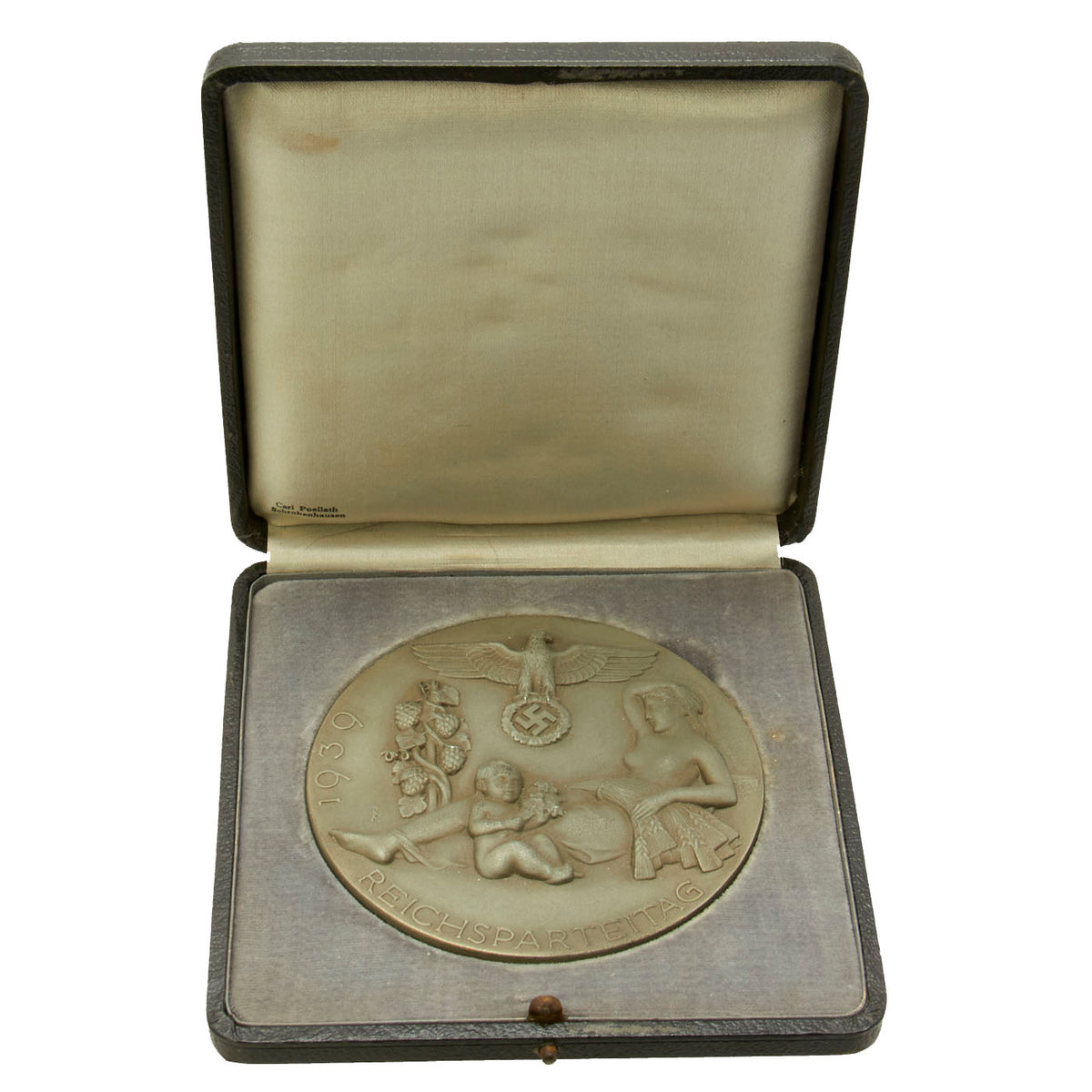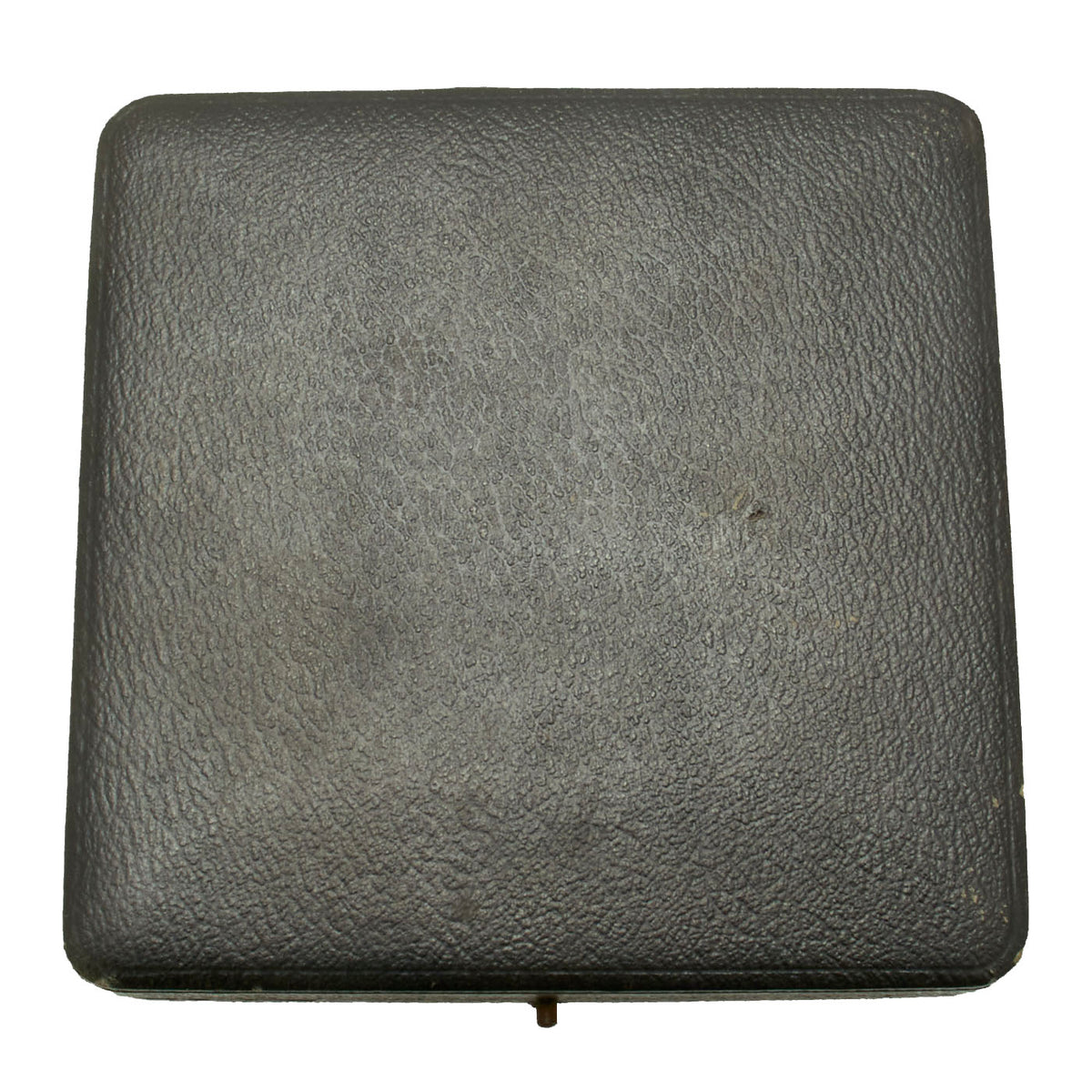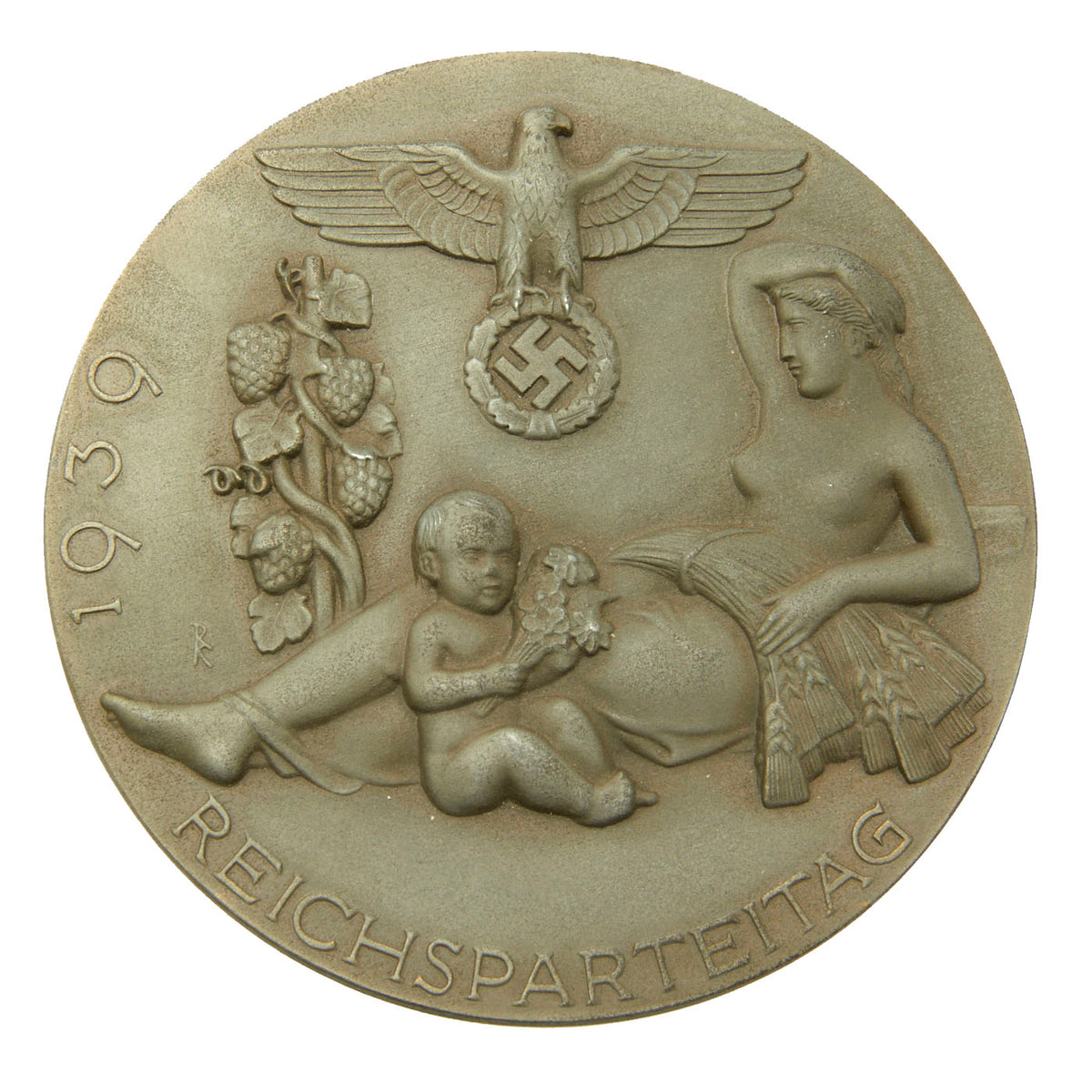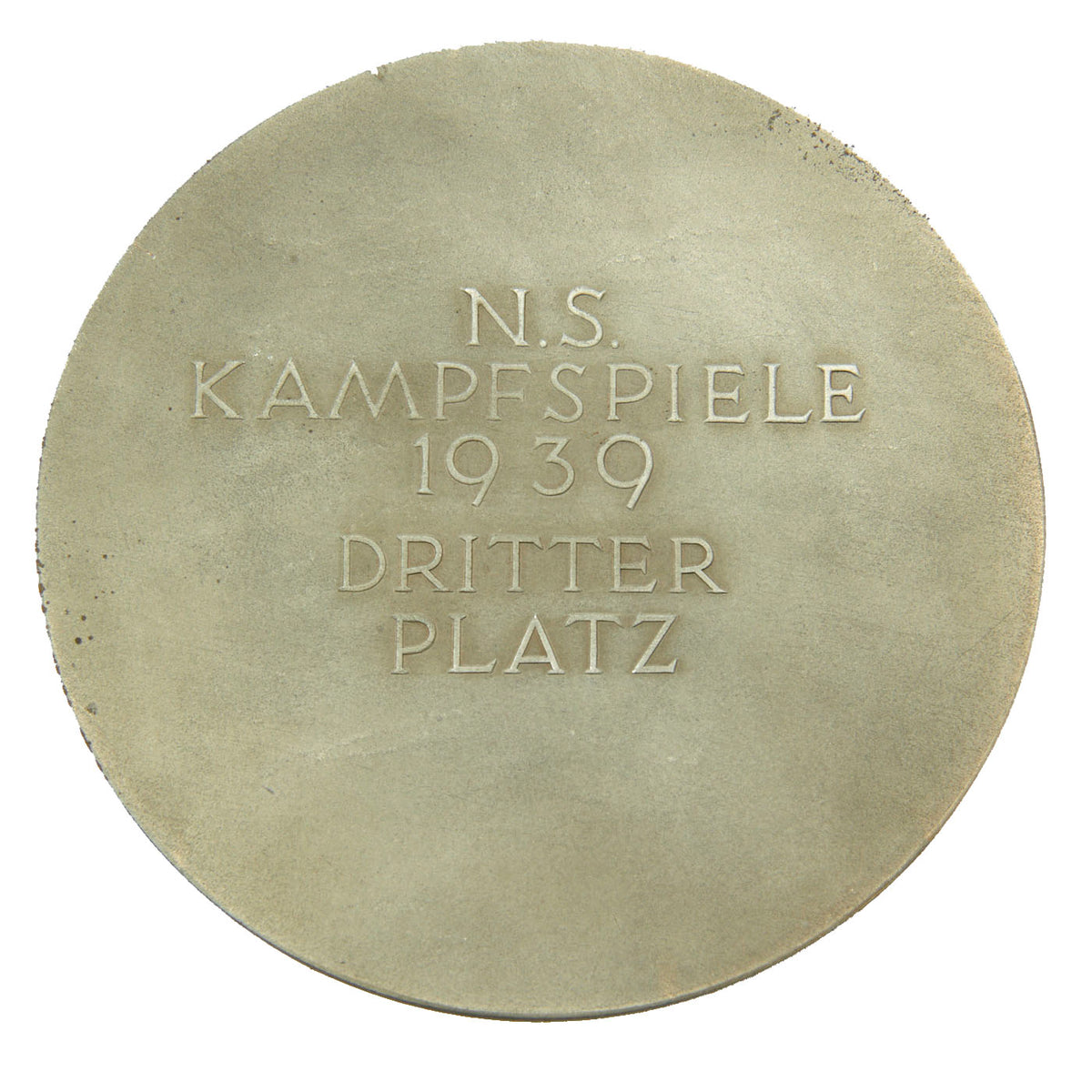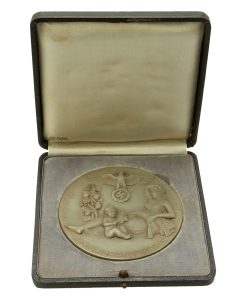Original German WWII Cased 1939 11th Nuremberg Rally Combat Games Third Place Table Medal by C. Poellath Original Items
$ 295,00 $ 118,00
Original Item: Only One Available. This is a very nice German WWII Era Cased Presentation “Table Medal”, a large award usually displayed on a shelf or table, as the name implies. The medal itself measures about 3 3/4” in diameter, and is 5mm thick, made of die struck zinc alloy. It comes in a very nice satin and velvet lined case measuring about 5 1/4″ square, with a functional hinge and lock. This is maker marked on the lid lining by Carl Poellath / Schrobenhausen.
The table medal was made to commemorate NSDAP Rally (Reichsparteitag) of 1939, which was to be the “Rally of Peace” (Reichsparteitag des Friedens). It was meant to reiterate the German desire for peace, both to the German population and to other countries. It was cancelled at short notice, as one day before the planned date, September 1st, Germany began its offensive against Poland (which ignited World War II).
The front of the metal shows the NSDAP Parteiadler (Party Eagle) at the top, with a Hop plant on the left. Under this is a mother with a wheat sheave in her lap, with a baby holding flowers next to her. Around the bottom of the medal is the inscription REICHSPARTEITAG 1939, for the 1939 “National Party Congress”, the large annual NSDAP Rally.
The reverse has an image of the HJ eagle and is marked with the following statement:
N.S.
KAMPFSPIELE
1939
DRITTER
PLATZ
This translates to “National Socialist Combat Games 1939, Third Place”.
Both the medal and case are in excellent, presentable condition. The medal has darkened over the years but still shows everything clearly. Ready to display!
The Nuremberg Rally was a celebratory event by the NSDAP in Germany, first held in 1923. They were large propaganda events, especially after A H’s rise to power in 1933, when they became annual occurrences at the me annual occurrences at the NSDAP rally grounds in Nuremberg until 1938. Many films were made to commemorate them, including Leni Riefenstahl’s Triumph of the Will and The Victory of Faith.
The first NSDAP rallies took place in 1923 in Munich and in 1926 in Weimar. From 1927 on, they took place exclusively in Nuremberg. The Party selected Nuremberg for pragmatic reasons: it was in the center of the German Reich and the local Luitpoldhain (converted parkland) was well suited as a venue. In addition, they could rely on the well-organized local branch of the party in Franconia, then led by Gauleiter Julius Streicher. The Nuremberg police were sympathetic to the event.
Later, the location was justified by the NSDAP by putting it into the tradition of the Imperial Diet (German Reichstag) of the Holy Roman Empire, considered the First Reich. After 1933, the rallies took place near the time of the Autumnal equinox, under the title of “The German people’s National Party days” (Reichsparteitage des deutschen Volkes), which was intended to symbolize the solidarity between the German people and the NSDAP. This point was further emphasized by the yearly growing number of participants, which finally reached over half a million from all sections of the party, the army, and the state.
Fast Shipping with Professional Packaging
Thanks to our longstanding association with UPS FedEx DHL, and other major international carriers, we are able to provide a range of shipping options. Our warehouse staff is expertly trained and will wrap your products according to our exact and precise specifications. Prior to shipping, your goods will be thoroughly examined and securely secured. We ship to thousands clients each day across multiple countries. This shows how we're dedicated to be the largest retailer on the internet. Warehouses and distribution centres can be located throughout Europe as well as the USA.
Note: Orders with more than one item will be assigned a processing date depending on the item.
Before shipping before shipping, we'll conduct a thorough inspection of the items you have ordered. Today, the majority of orders will be delivered within 48 hours. The delivery time will be between 3-7 days.
Returns
The stock is dynamic and we cannot completely manage it because multiple stakeholders are involved, including our factory and warehouse. So the actual stock may alter at any time. It's possible that you may not receive your order once the order has been made.
Our policy is valid for a period of 30 days. If you don't receive the product within 30 days, we are not able to issue a refund or an exchange.
You can only return an item if it is unused and in the same state as the day you received it. You must have the item in its original packaging.
Related products
Uncategorized
Uncategorized
Uncategorized
Uncategorized
Armored Burgonet Helmet & Polearm from Scottish Castle Leith Hall Circa 1700 Original Items
Uncategorized
Uncategorized
Uncategorized
Uncategorized
Uncategorized
Uncategorized
Australian WWII Owen MK1 Machine Carbine SMG Custom Fabricated Replica with Sling Original Items
Uncategorized
Uncategorized
Uncategorized
Uncategorized
Uncategorized
Uncategorized
Band of Brothers ORIGINAL GERMAN WWII Le. F.H. 18 10.5cm ARTILLERY PIECE Original Items
Uncategorized
Uncategorized
